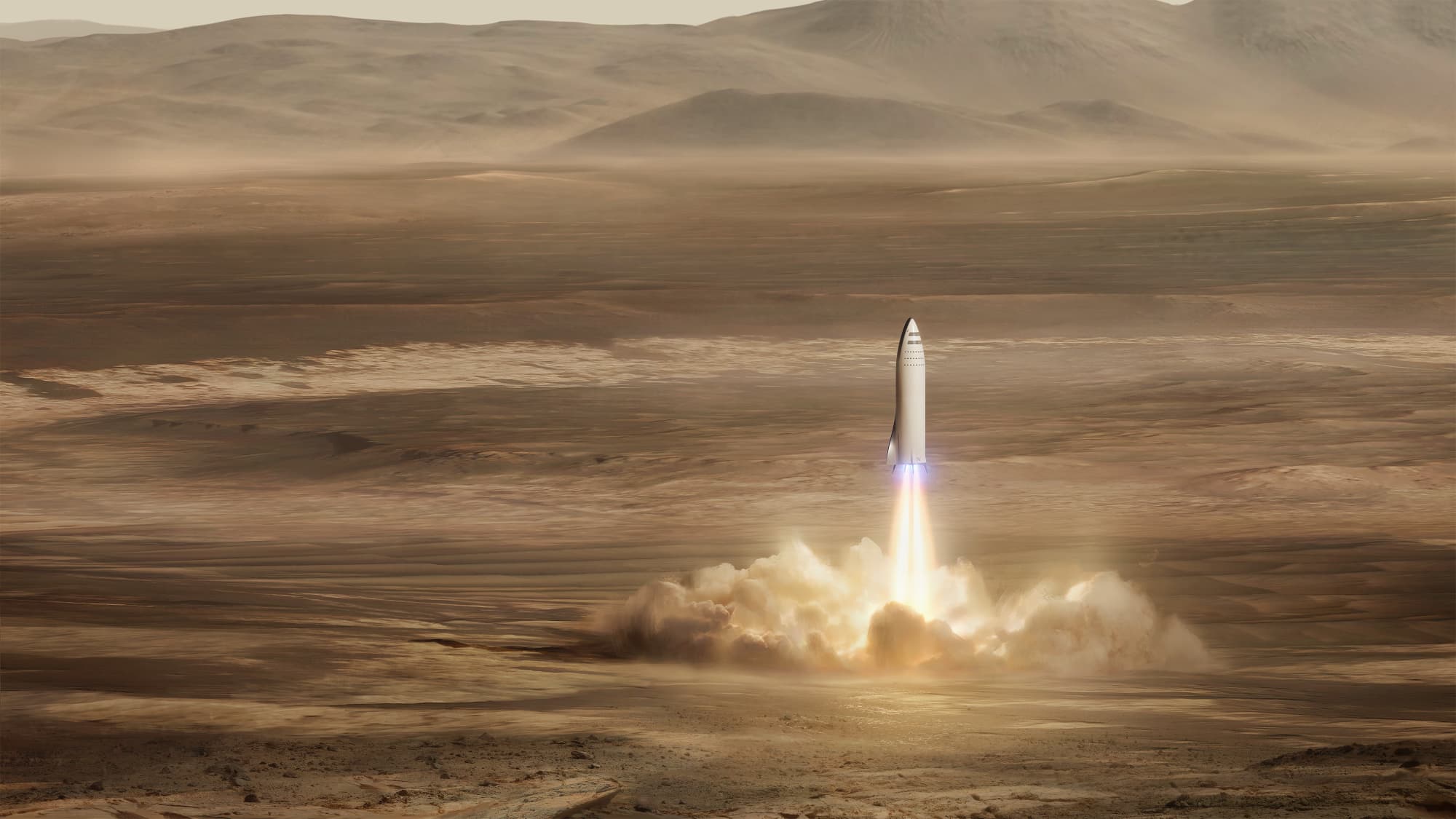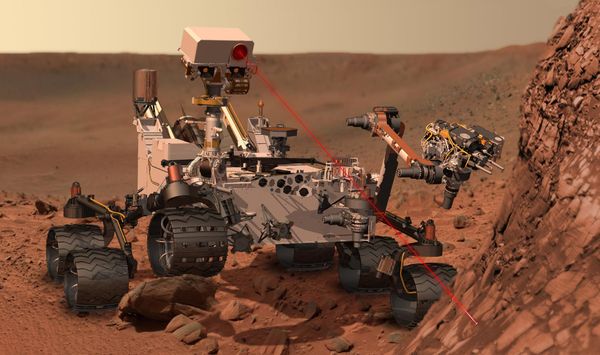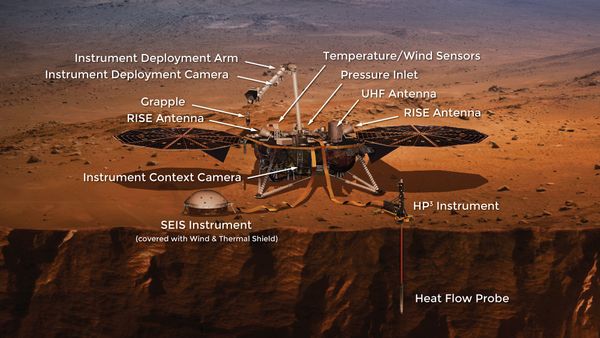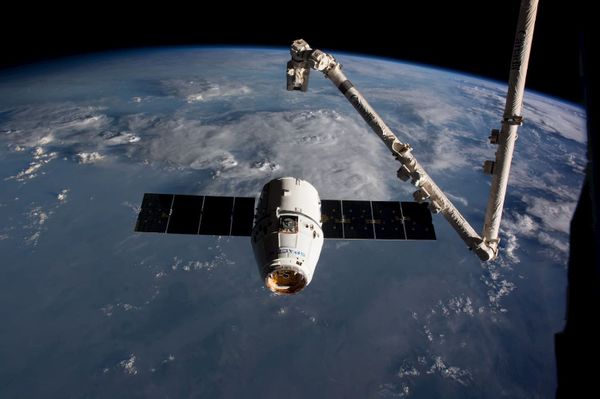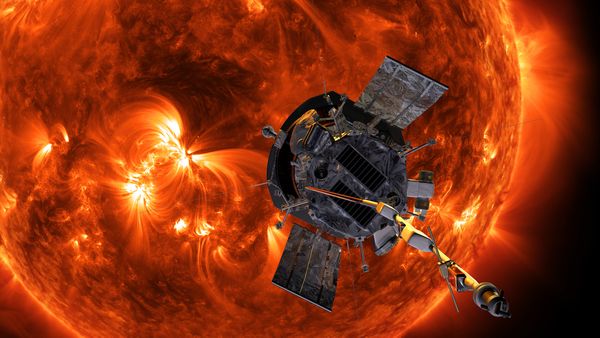The Humans to Mars summit at The George Washington University brought together many of the key public and private players in spaceflight to talk about the goal of sending humans to Mars.
At a panel on the affordability of Mars exploration, Josh Brost, Senior Director of US Government Business Development, spoke regarding SpaceX's plan to build a rocket and transportation system capable of sending humans to Mars.
Livestream of the summit above. The panel starts at starts at 2:37:00 and Josh Brost begins speaking at 3:00:00
First Mars Rocket Tests in H12019
As we have previously covered, SpaceX has been making significant progress on the tooling for the BFR, a rocket capable of sending humans to Mars. Raptor engine development, cryogenic carbon composite tanks, and internal systems like avionics and life support all need to come together to enable the massive rocket to carry humans. However, the timeline for the first suborbital test flights of the second stage and spaceship, BFS, has been hinted at being as early as 2019, although usually prefaced as late 2019. New technology development, but perhaps even more importantly, new infrastructure able to build the large vehicles will be required. SpaceX has already received both Port of LA and LA City Council approval to build the future factory for BFR in Los Angeles.
Brost: as early as the first half of next year we’ll start doing vertical takeoff and landing tests of our first BFR upper stage. #HumansToMars
— Jeff Foust (@jeff_foust) May 9, 2018
Moderator Scott Hubbard: any updates to the “aspirational” schedule of Mars missions in early 2020s Musk gave last September?
— Jeff Foust (@jeff_foust) May 9, 2018
Brost: Those are still the target dates, but they are aspirational. #HumansToMars
Brost: there was a learning curve with reusability on Falcon 9, but we we think we know now how to make large-scale booster reuse work. #HumansToMars
— Jeff Foust (@jeff_foust) May 9, 2018
This new timeline is a good sign, showing confidence in the many parallel development programs needed to get a flight-worthy vehicle completed. After five years of delays for Falcon Heavy, it is easy to doubt SpaceX's ability to keep to development timeslines. However as Brost highlights, the development of intial reusability capability, including precision landings at sea and on land, have been a significant factor in development time. Now that the principles and processes have been established, porting those over to a larger two-stage liquid fueled vehicle design may be easier.
Can we afford to go to Mars?
The primary focus of the panel was discussing the true costs of Mars and whether the United States, or any other country or group of countries could afford to go. The Jet Propulsion Laboratory's Hoppy Price, Chief Engineer of NASA's Robotic Exploration Program talked about potential Mars archictectures that could be afforded within the current NASA budget. Brost highlighted SpaceX's different approach.
Josh Brost, SpaceX: we have a different take on affordability. We have to have cost structures to eventually allow millions to go to space. #HumanToMars
— Jeff Foust (@jeff_foust) May 9, 2018
Brost: our approach minimizes unique elements with BF and in-space refueling; with reusability to lower costs. #HumansToMars
— Jeff Foust (@jeff_foust) May 9, 2018
By focusing on minimal number of unique components and leveraging reusability, SpaceX thinks it could keep its costs affordable to itself. That explains the disparity between NASA's proposed mission architectures and the BFR plan. While smaller craft with shorter crew stays could be safer, cheaper, or quicker in the short term, larger vehicles are needed to send large quantities of people to Mars to stay for long periods.
What about NASA?
NASA's new administrator Jim Bridenstine, spoke at the Humans to Mars summit about the key factors that would enable NASA's new push towards the Moon and eventually Mars. Decreasing costs of launch and private capital would be critical components of any NASA-led mission beyond Low Earth Orbit. Brost's comments tied into this sentiment as well.
Brost: we’re focused on getting people to Mars affordably; let others solve how they live when they get there. #HumansToMars
— Jeff Foust (@jeff_foust) May 9, 2018
NASA astronaut and second man to walk on the Moon, Buzz Aldrin, talking about SpaceX and Blue Origin: how do we integrate these two “supposedly private” efforts into government ones for Moon and Mars?
Combining both sides of the space industry is going to be a challenge over the coming decades. While leveraging private capital, new technologies, and the general efficiency of private industry will allow government organizations like NASA to do more with less, balancing the two methadologies will be critical. Brost raised this concern during the panel as well.
Brost: NASa is our biggest customer, but if we relied only on NASA, we would have ended up with a very different architecture. #HumansToMars
— Jeff Foust (@jeff_foust) May 9, 2018
With SpaceX's timeline estimating boots on the ground of Mars in just 7 years, it will interesting to see if public-private partnerships form to fill in the capability gaps a real Mars mission would require beyond basic transporation. Hopefully we will see research opportunities, space start-ups, and international programs begin to form to support future Mars missions. Whether the vehicle sending them is built by SpaceX, NASA, or some other group, the pace towards Mars is definitely quickening.

